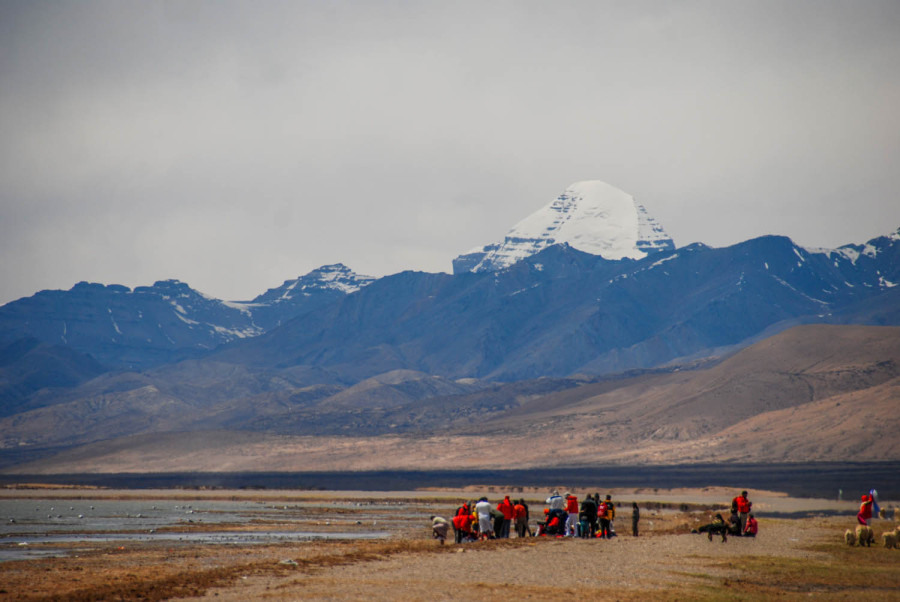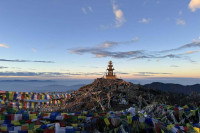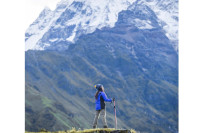Travel
Kailash Manasarovar Yatra set to resume in June after 5-year gap
India and China’s special representatives’ meet in Beijing on December 18 reaffirmed commitment to pilgrimage.
Sangam Prasain
Nepali tour operators anticipate over 20,000 Indian bookings for the holy Kailash Manasarovar Yatra in Tibet, which is expected to resume in June after a break of five years.
This development follows the 23rd meeting of India and China’s Special Representatives in Beijing on December 18, 2024. Ajit Doval, India’s national security adviser, and Wang Yi, China’s foreign minister, reaffirmed their commitment to promoting the resumption of the pilgrimage.
“Indian operators have already started taking bookings,” said Basu Adhikari, managing director of Touch Kailash Travel and Treks.
However, Nepali operators are holding off on accepting bookings as China’s Department of Foreign Affairs has yet to designate the main agency responsible for managing the pilgrimage tour.
“We have heard from Lhasa that by mid-February, there will be a decision on the fees and opening dates for the Indian pilgrimage,” Adhikari added. The yatra is expected to begin in April for travellers from third countries.
The Kailash-Manasarovar Yatra is a difficult journey through the majestic Tibetan plateau, also known as the ‘roof of the world’. Pilgrims brave high altitudes, rugged terrain, and unpredictable weather conditions.
Typically, Indian tour operators handle Kailash-Manasarovar Yatra bookings, while Nepali tour operators are subcontracted to take tourists to Kailash.
In Hinduism, Buddhism, and Jainism, the pilgrimage to Kailash Parvat is considered one of the most sacred journeys. It centres around Mount Kailash, believed to be the abode of Lord Shiva.
Before Covid, every year, thousands of devotees, especially Indians, made the holy pilgrimage to Mount Kailash to complete kora (circumambulation of the mountain) with the belief that it could liberate them from all the sins of their lifetime.
At Manasarovar Lake, devotees used to take a direct dip, which has been prohibited since 2018, but pilgrims can still collect water in a bucket to perform the sacred bath.
The average package for Indian pilgrims is estimated to cost around IRs300,000 (Rs480,000) per person this year.
Before 2018, the China-India Pilgrimage Service Centre in Lhasa issued permits for Indian pilgrims, but this was suspended for internal reasons. Subsequently, the Foreign Exchange Centre was established for the same purpose but was later closed down.
“Lhasa has yet to establish a new and dedicated platform to manage the Indian pilgrimage,” said Adhikari. “The platform will also ascertain the actual costs, taxes, and other services for Indian pilgrims.”
Although Beijing reopened several Nepal-China border points in May 2023, after three years, it imposed various restrictions that made travel challenging. Indian pilgrims, in particular, faced stringent limitations, which many attribute to ongoing India-China geopolitical tensions.
In 2023, while borders reopened for other travellers, Indian pilgrims were denied access, and nearly 50,000 bookings for the Kailash Manasarovar Yatra were cancelled.
The restrictions caused immense disappointment among Indian devotees and severely impacted Nepal’s tourism, with significant losses for hotels, tour operators, airlines, and other businesses.
Before the pandemic, around 15,000 Indian pilgrims travelled to Kailash Manasarovar annually through Nepal’s Hilsa border.
During the G20 summit held in Rio de Janeiro, Brazil, in November 2024, India’s External Affairs Minister, S Jaishankar, and China’s Foreign Minister, Wang Yi, discussed measures to improve bilateral ties. Topics included resuming direct flights between India and China and reopening the Kailash Manasarovar Yatra.
A follow-up meeting was held in Beijing after a month between Wang and Doval.
The Kailash Manasarovar pilgrimage season runs from April to October, with the peak and most expensive period being during the monsoon months of mid-June to early September.
This annual pilgrimage is a significant economic driver for Nepal’s tourism industry. It benefits hotels, restaurants, airlines, guides, and porters and boosts government revenue.
There are five main routes to Mt Kailash and Lake Manasarovar:
First, the disputed Lipulekh Pass, once the primary route for Indian pilgrims, has been restricted since 2015 due to Nepal’s territorial claims.
India, however, has been gradually opening the passage for the link road for the Manasarovar Yatra from Dharchula to Lipulekh, known as the Kailash-Manasarovar Yatra Route.
Following the December 18, 2024, meeting of top Chinese and Indian officials in Beijing, China implemented a quota system. Under this system, Beijing allows 18 groups of Indian government officials, each group comprising 50 individuals, to enter its territory through the Lipulekh Pass.
Beijing used to issue quotas or special pass systems from the Nathula Pass in Sikkim, India. However, the route was discontinued due to its high altitude and ‘impracticality.’
In Nepal, there are four options for visiting Manasarovar: Tatopani, Rasuwagadhi, Hilsa and the Kathmandu-Lhasa flight.
The Kathmandu-Lhasa route is the only international gateway to Tibet. Operators said the Chinese authorities have not allowed tourists to move from Tatopani.
The Nepalgunj-Simikot-Hilsa-Manasarovar route is the shortest, most affordable, and easiest option.
Pilgrims fly from Nepalgunj to Simikot, take a helicopter to Hilsa, and continue overland into Tibet. Travellers acclimatise for one to two days in Purang (Taklakot) before proceeding to Lake Manasarovar, situated at 4,556 meters.
Nepalgunj has become a major gateway for Indian pilgrims, prompting the establishment of over a dozen luxury hotels catering to visitors. In Hilsa, 35 hotels have developed with investments ranging from Rs1 million to Rs20 million and await the return of pilgrims.
According to travel traders, more than 20,000 Indian pilgrims travelled to the sacred mountain and freshwater lake in China via Nepal in 2018.
In 2019, the number rose sharply to nearly 30,000. Then Covid came as a spoiler, and China closed the border in January 2020.
Karma Lama, a tourism entrepreneur, said, “Before Covid, the Hilsa border saw a large influx of Indian tourists. The prolonged closure caused heavy financial losses, and despite last year’s reopening, the number of visitors remains negligible.”




 23.12°C Kathmandu
23.12°C Kathmandu










